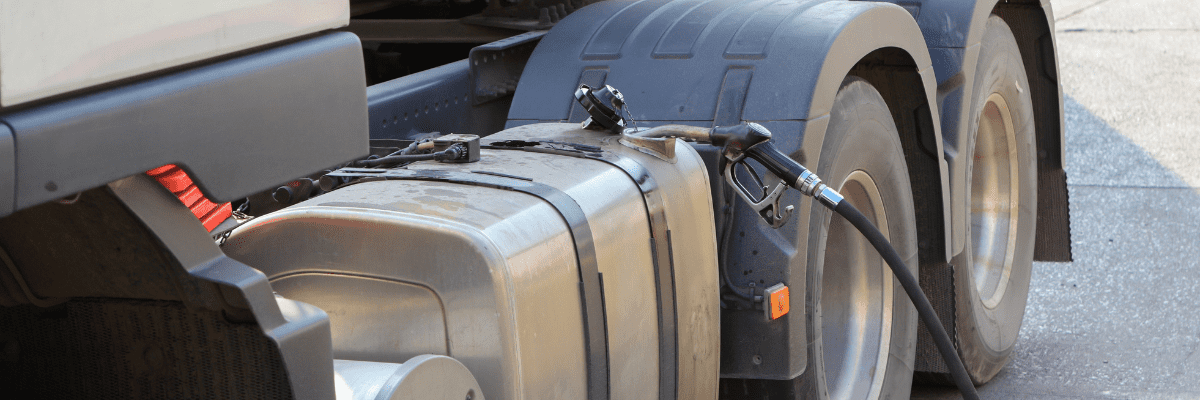choosing a fleet management system

What can a Fleet Management System do for you and what should you look at when choosing one?
Managing a fleet can be challenging experience. An Advanced
Fleet Management System can help by giving you access to clear and actionable
data about the vehicles across your entire fleet.
Any fleet management solution should provide you with data-based insights about GPS or satellite vehicle tracking, safety, routes and trips, upcoming vehicle maintenance, fuel, and driver management. These factors help to reduce costs, streamline workflows, and automate more processes within your fleet operations.
How can fleet management software help you?
A comprehensive fleet management system can give you a more complete view of how your fleet is performing. Fleet managers should be able to quickly locate their vehicles, monitor route and trip conditions and performance, reduce fuel costs, and improve driver safety, performance, and health. In the end of the day all these factors count up to save you money, improve fleet utilization, target your driver training and to enhance your bottom line.
The system should allow you to drill down into your data on
demand, providing actionable insights to help you save time and money in an
easy-to-understand, easy-to-access kind of way. Even better, the Advanced Fleet
Management System should be intuitive enough to deliver driver, trip, and fuel
reports automatically to your email inbox.

It's the bottom line that counts
A good fleet management solution will present data in a
clear and intuitive way, helping you to identify trends that previously might
have been difficult for you to see. The fleet management system tells the story
that remains hidden in the data generated by your fleet and answers questions
you might have not asked yet, but which influence your profitability and
operational efficiency. You will be able to spot fuel inefficiencies, hazardous
or wasteful driving styles, identify new ways to optimize routes and trips and
have a better control over your fleet, drivers and your bottom line.

Tracking your Fuel
Fuel is by far one of the most expensive input costs
associated with your fleet. Keeping a constant eye on how every liter is spent,
is tantamount to running a profitable operation.
Most fleet management systems rely on measuring the distance
travelled compared to the time, to determine the average fuel consumption. An Advanced
Fleet Management system should incorporate physical measuring devices like
probes that reports fuel usage directly from the vehicles’ tanks.
In-tank probe sensors are by far superior when it comes to
measuring every single liter of fuel received and spent. Even better when your
supplier issues a calibration certificate for each installation and regular
health check are performed.
Advanced Fleet Management systems should also be able to
alert you of sudden decreases in fuel which could point to fuel being
pilferaged.
You should also be able to designate preferred fuel
suppliers and be alerted if your fleet is filling up somewhere else.
Many transport and logistics operators purchase fuel in
bulk. Measuring every liter that their assets use, is only one halve of the
fuel equation for them.
Statistics show that most bowsers and fuel suppliers rely on
uncalibrated, outdated methods of measuring bulk fuel. This means that you are
neither sure that if what you are paying for is what you are receiving, nor can
you exactly reconcile fuel purchased, to fuel spent, to fuel consumed.
An Advanced Fleet Management System should be able to report
and record bulk fuel purchases and dispensing events with an accuracy of up to
98%. This is a far better margin than the 90 – 95% older methods produce.
This will also ensure that you will be able to tell
immediately if the bulk fuel consignment you just received, equals the dispense
quantity on the supplier’s delivery slip.
Fleet managers will also be able to tell accurately if fuel
dispensed from bulk bowsers into vehicles are adding up to the consumption
produced by that vehicle.
By measuring not only the fuel flow through your assets'
tanks, but also from and to your bulk fuel bowsers, you would have effectively
closed the fuel circle of a transport and logistics company, limiting losses.

Monitoring Drivers
As a fleet manager, you are required to have a constant view
of not only where your drivers are, but also on what they are doing. A quick
example is the measurement of excessive idling time, harsh braking or speeding
by drivers which can dramatically increase the fuel consumption of a trip.
By setting up your fleet management system to alert you of
these incidents as they happen, you will be able to take immediate action on a
real event that can save you up to 5% on your overall fuel cost.
This all happens automatically in the background and all
that remains, is to action and correct the incident your fleet management
system has just alerted you about, by reaching out to the driver.
Advanced Fleet Management Systems should include Driver Scorecards
that monitors driver behaviour and driving style over an extended period. These
scorecards should be adjustable so that you can apply your own points-based
penalty system to driver violations.
This way you can target and improve your driver training and
improve the safety of your drivers.
Improving Safety
With the advent of the IoT and camera technology ever
evolving, it has now become possible to integrate A.I. into in-cab and
road/cargo-facing camera solutions. This means that you will not only be
alerted of incidents as they happen on a trip, but that you will be able to
view actual video and sound footage of the incidents or violations. This is also
a fool proof way of having irrefutable evidence of the road or traffic
conditions and the state of your customers’ cargo while in transit.
A.I. can distinguish between normal driving behaviour and
recklessness, eg. smoking in the cab, picking up passengers along the route or
driver fatigue.
An additional benefit of an Advanced Fleet Management System
is that you can identify specific geographical beacons, areas or routes and
allocate time limits, passing points or even impliment no-go zones. You will
then be alerted if a driver takes to long to get to a specific beacon on their
route or if they remain for an extended period of time within a certain area
before continuing on.
This also helps immensely in optimizing your routes and
trips by finding the most time and cost-efficient alternative to a route.

Finding your assets
One of the simplest requirements of any Fleet Management
System is the ability to effortlessly find the assets that make up your fleet.
Whether these are trucks, yellow equipment, trailers,
reefers, bulk fuel bowsers or containers – it should not be more difficult than
opening your phone and punching in your assets’ name.
It is however not that simple when you consider that most
fleet management systems rely on GPS tracking, which in turn rely on GSM or
cell phone tower coverage.
If your fleet travels mostly locally and in areas you are
sure that there will be sufficient GSM-coverage, you have nothing to worry
about.
But when your fleet starts crossing borders or if they are
traveling to remote areas, you are faced with two options. Either install
costly roaming SIM-cards in your tracking devices and hope that there will be
GSM-coverage or opt to invest in satellite tracking devices that will ensure
24/7, guaranteed, uninterrupted view of your assets, regardless of the regions
or countries they travel to.
Powering your tracking devices
Another obstacle in finding your assets is that most
tracking devices require a permanent power source to be able to transmit their
locations to your Fleet Management System.
This is fine when the tracking device is connected to the
truck's battery, but what happens when you unhook a valuable cargo in someone’s
yard and dash off to do the next load?
The same can be asked for Yellow Equipment, who’s batteries
are often disconnected when they are not required to work. Who watches over
equipment when they stand idle and who takes the responsibility of guarding
assets or cargo worth millions?
Containers, trailers, Yellow Equipment, parked Reefers etc.
can easily be tracked if the power source is not dependent on the truck’s
battery, but comes from a renewable energy source like solar power.
Some of the latest satellite tracking devices offers solar
power and easy installation and de-installation as an alternative.

Fleet Maintenance
How much money does your business lose each time a vehicle
is taken off the road for unexpected repairs? Whether due to accidents or
regular wear and tear from daily use, vehicle downtime and fleet maintenance
are some of the unavoidable realities fleet managers face. But as a fleet
manager, you can either be prepared and anticipate downtime, or be caught
off-guard.
Unexpected downtime costs more than just the price of
replacement parts—not only do you lose out on hours or days of work, but you
also risk upset customers, spoiled cargo (if you’re hauling food or beverages),
and drivers missing out on getting paid. An Advanced Fleet Management System
should be able to alert you of upcoming maintenance to your assets and should
likewise keep track of vehicle license disc and driver licence expiration
dates.
Choosing an Advanced Fleet Management System can be a
daunting task. The Globaltrack Advanced Fleet Management System caters to large
and smaller fleets and comes with in-house training and support around the
clock. Contact us on info@globaltrack for a no-obligation demo of Webtrack, our
award winning Advanced Fleet Management System.





